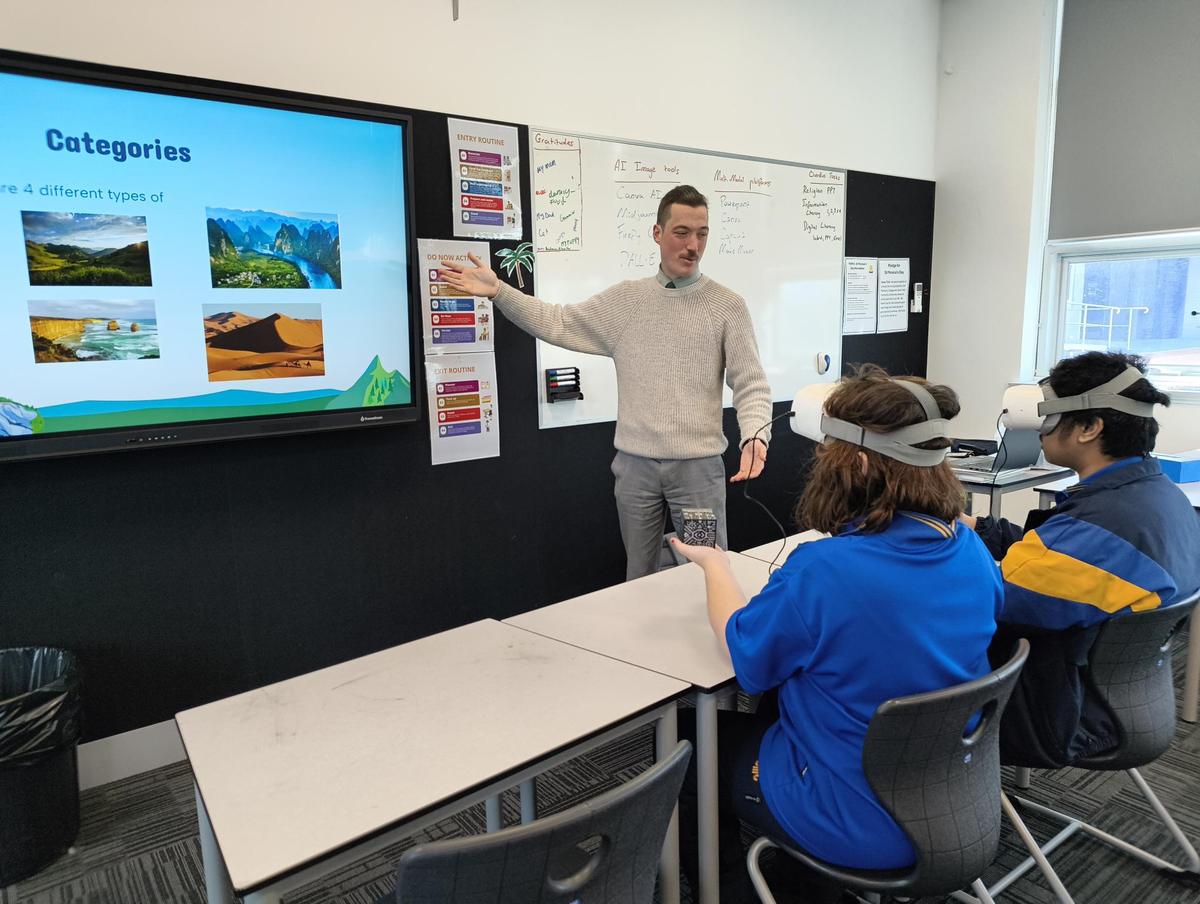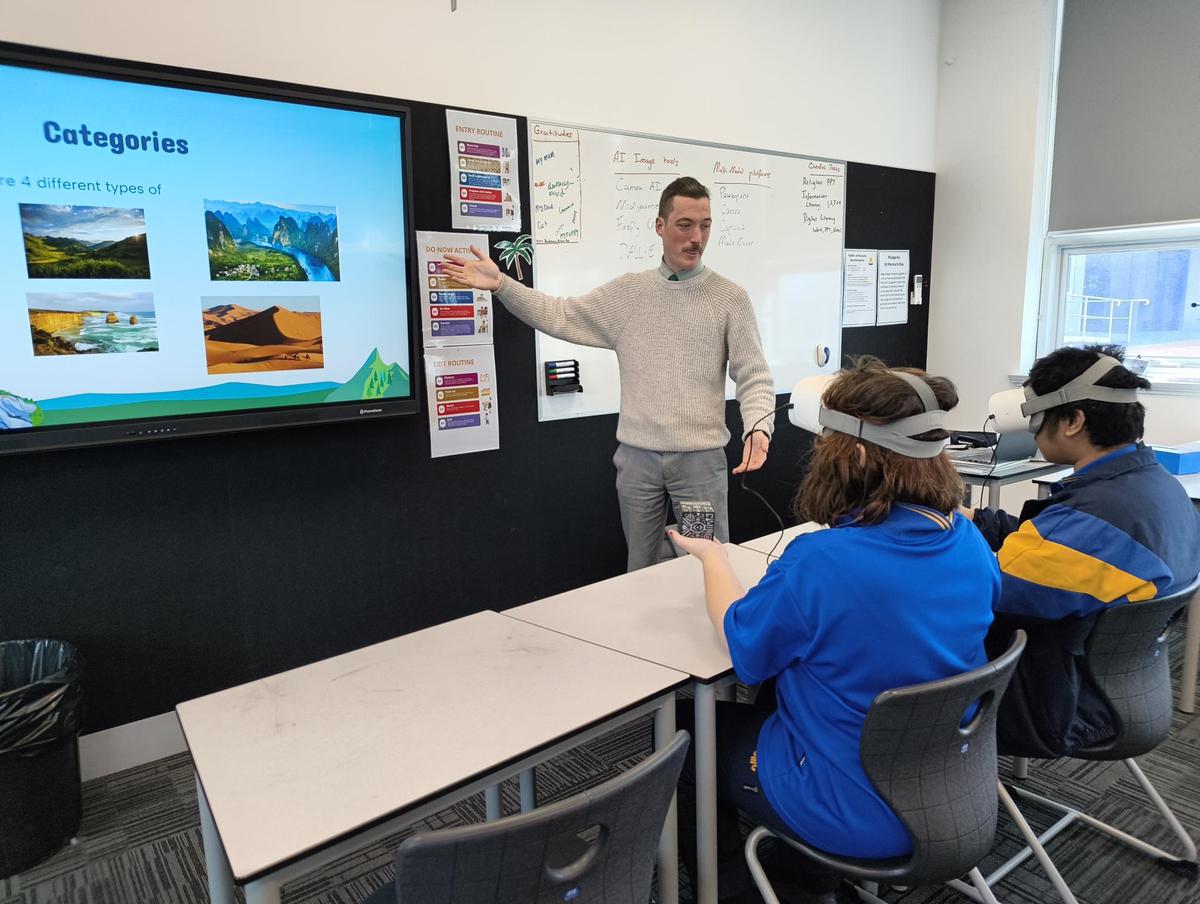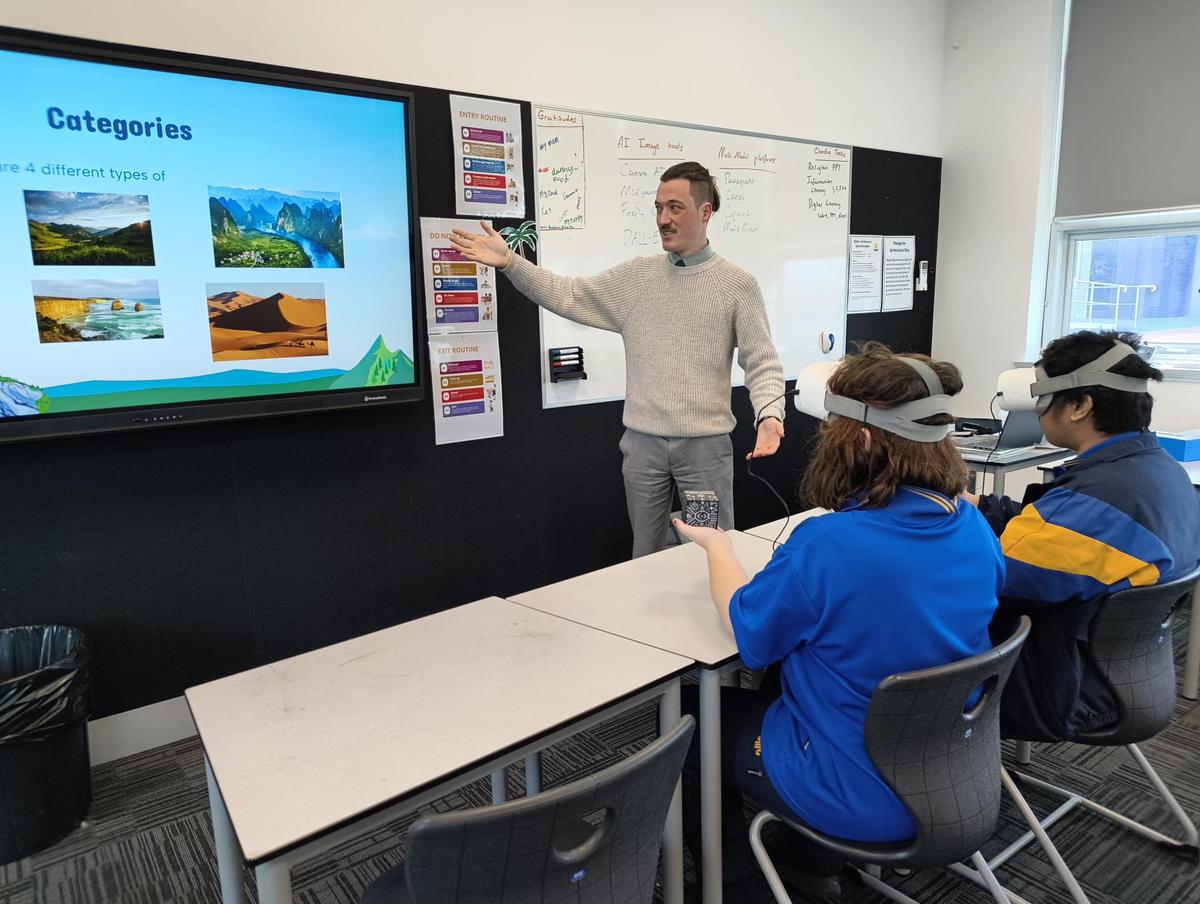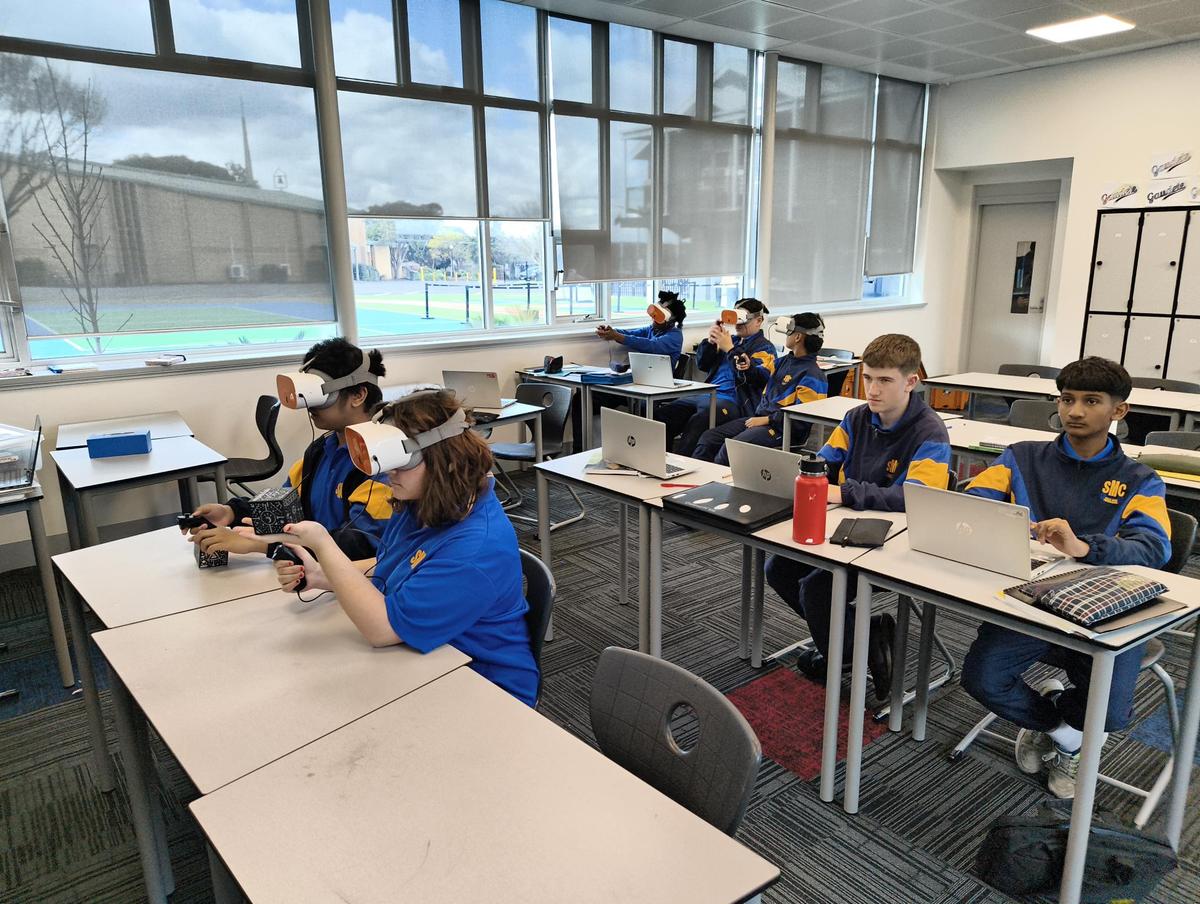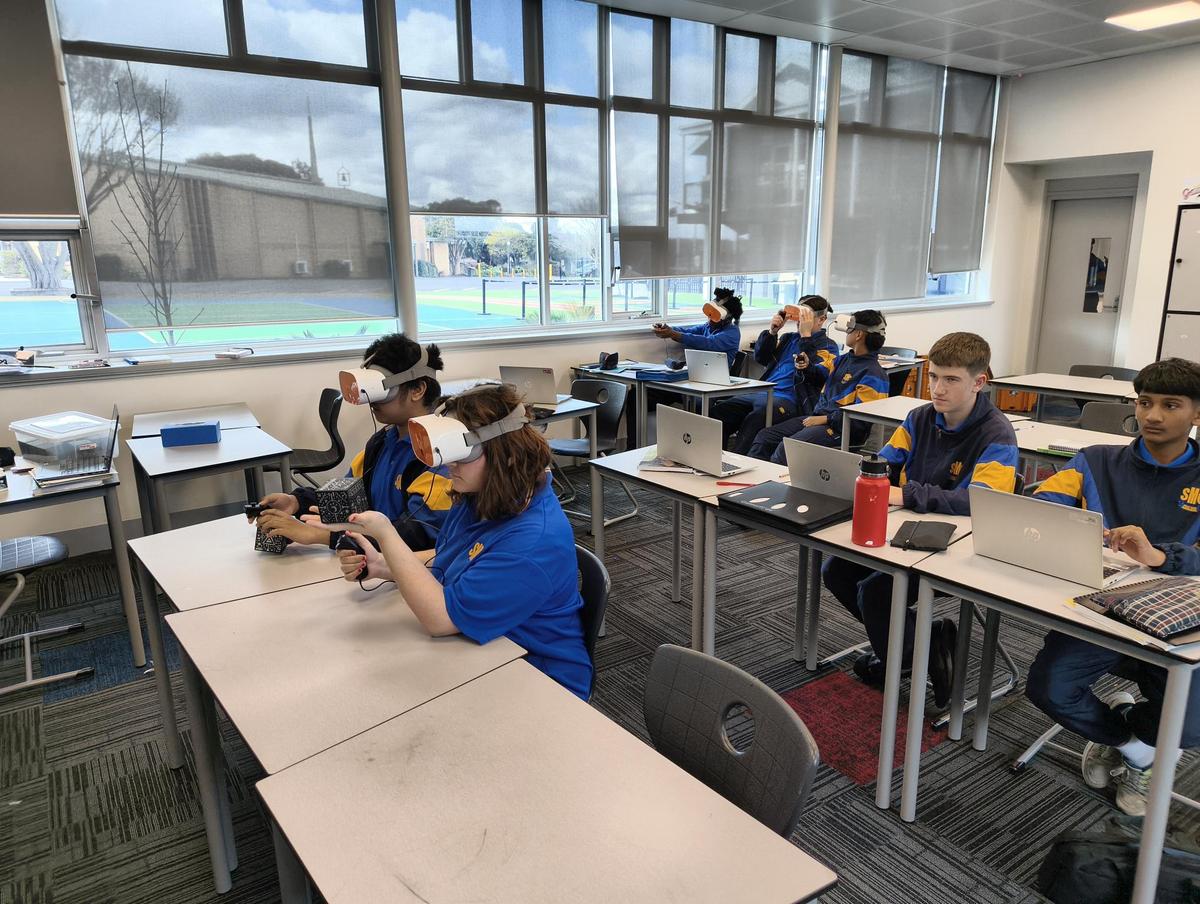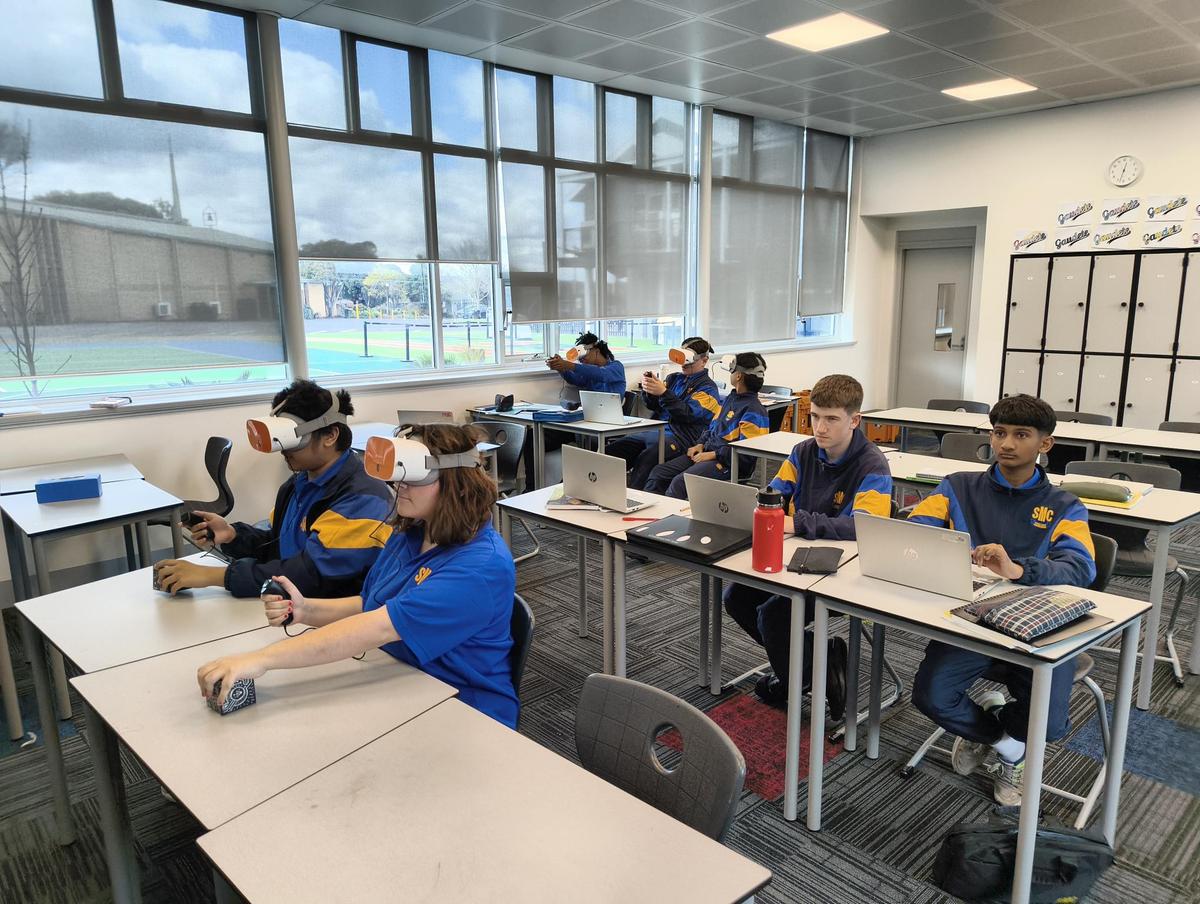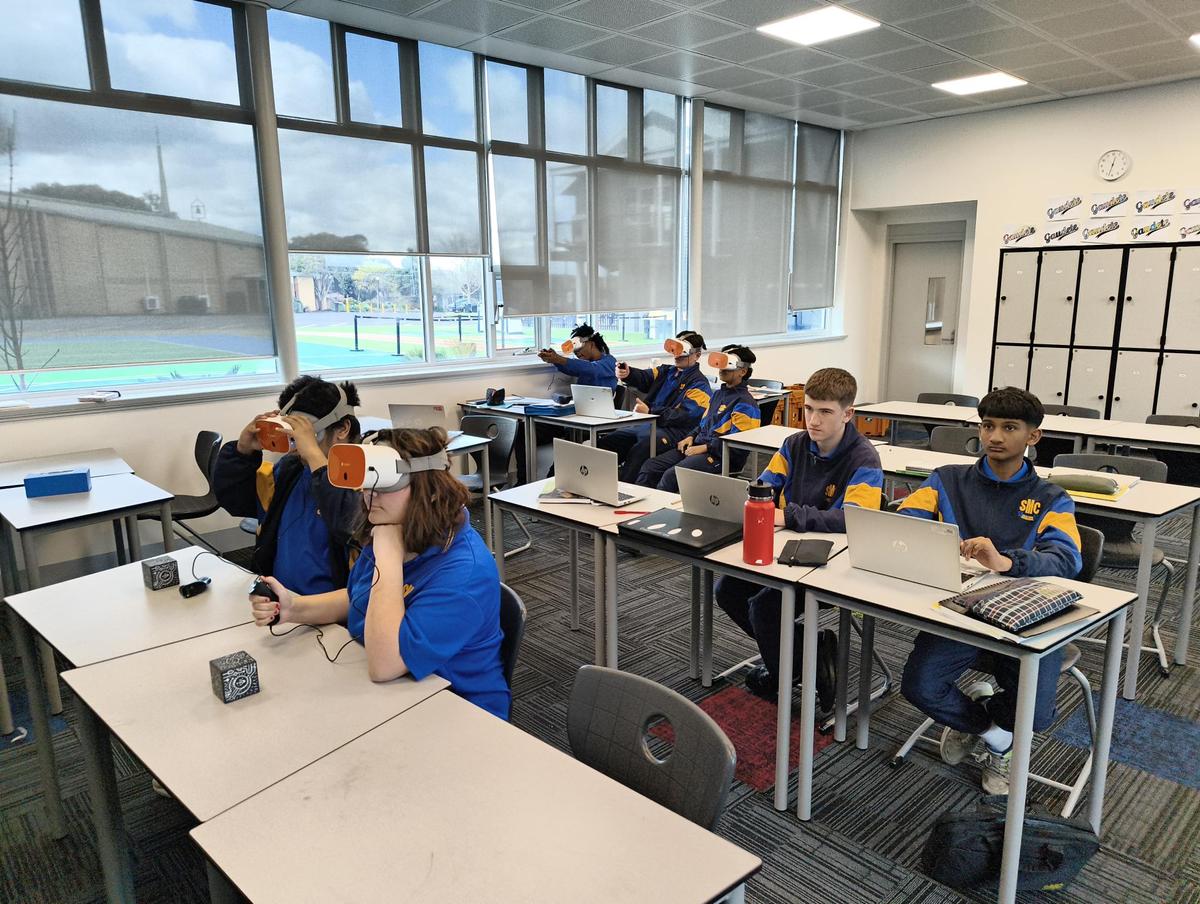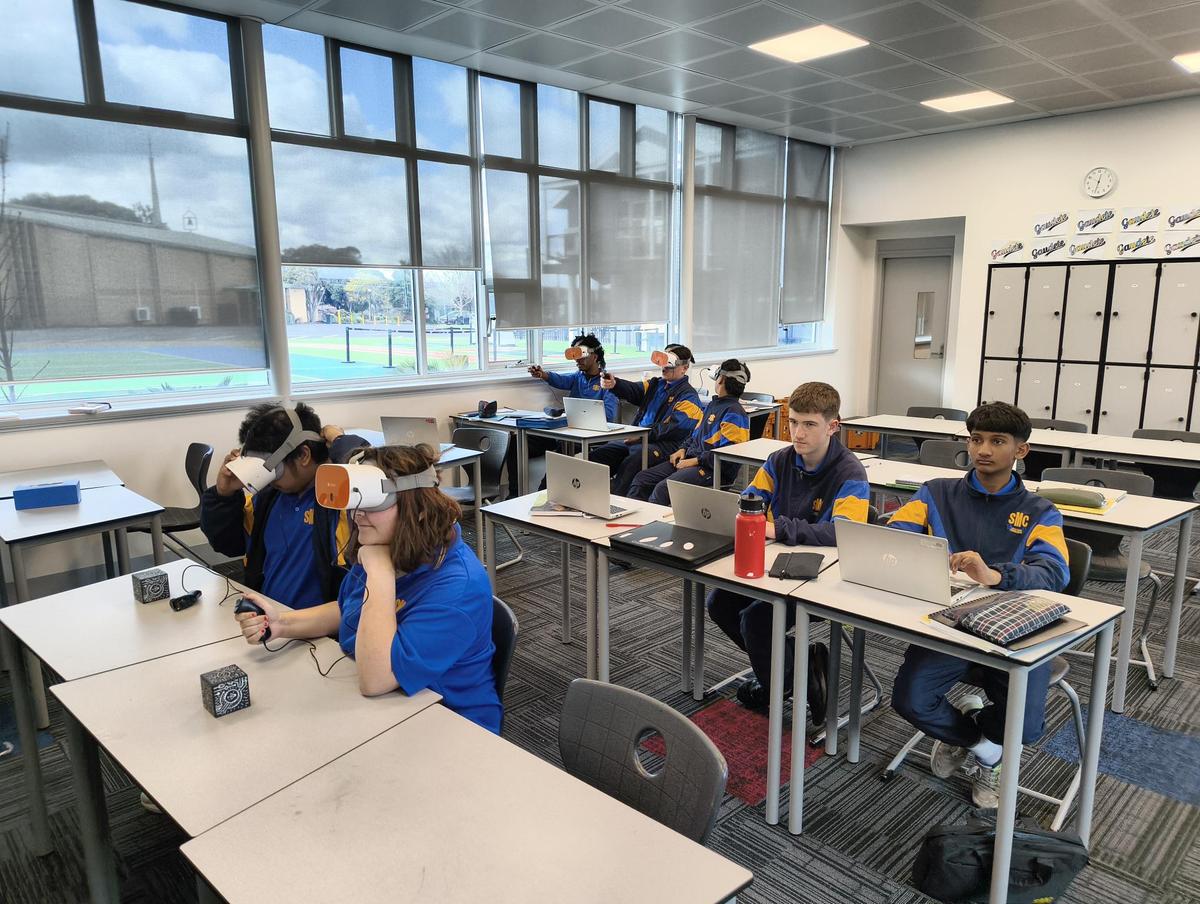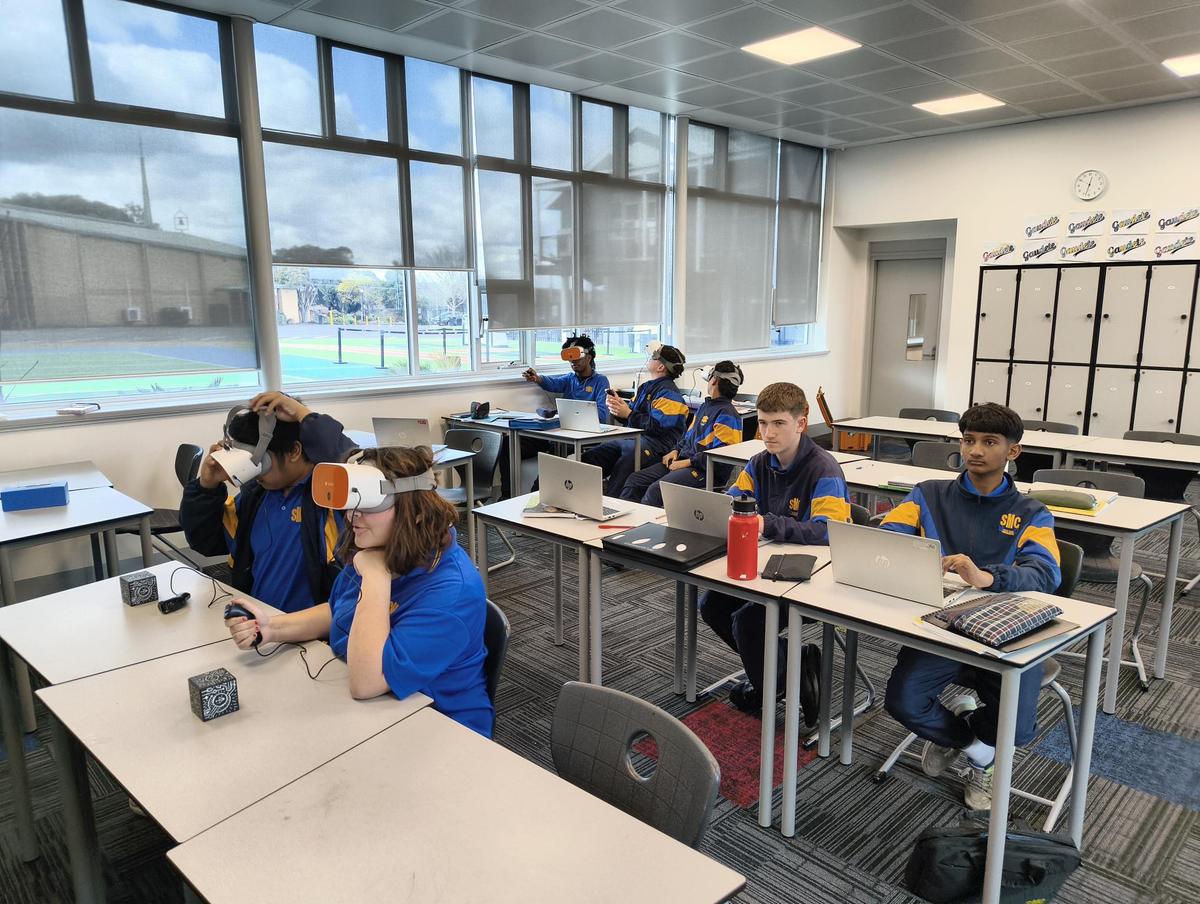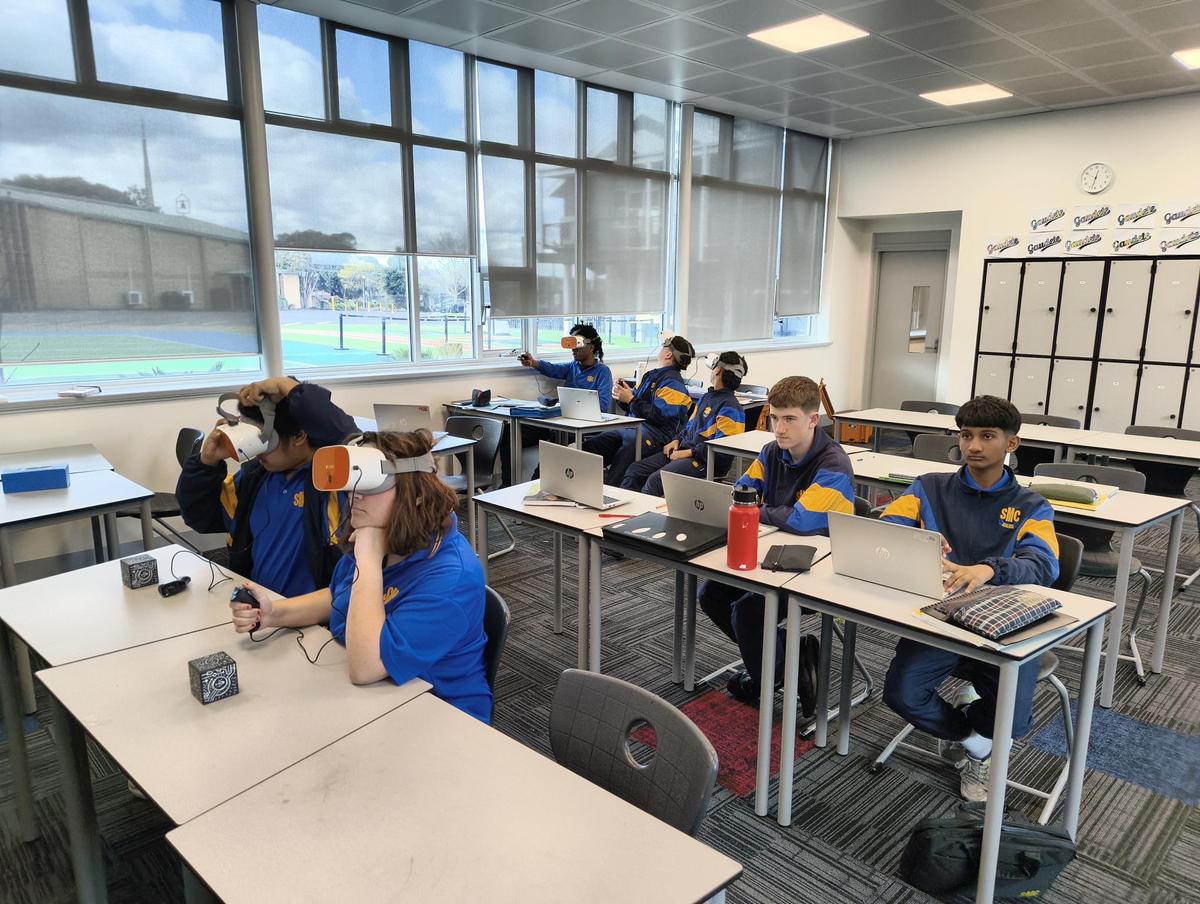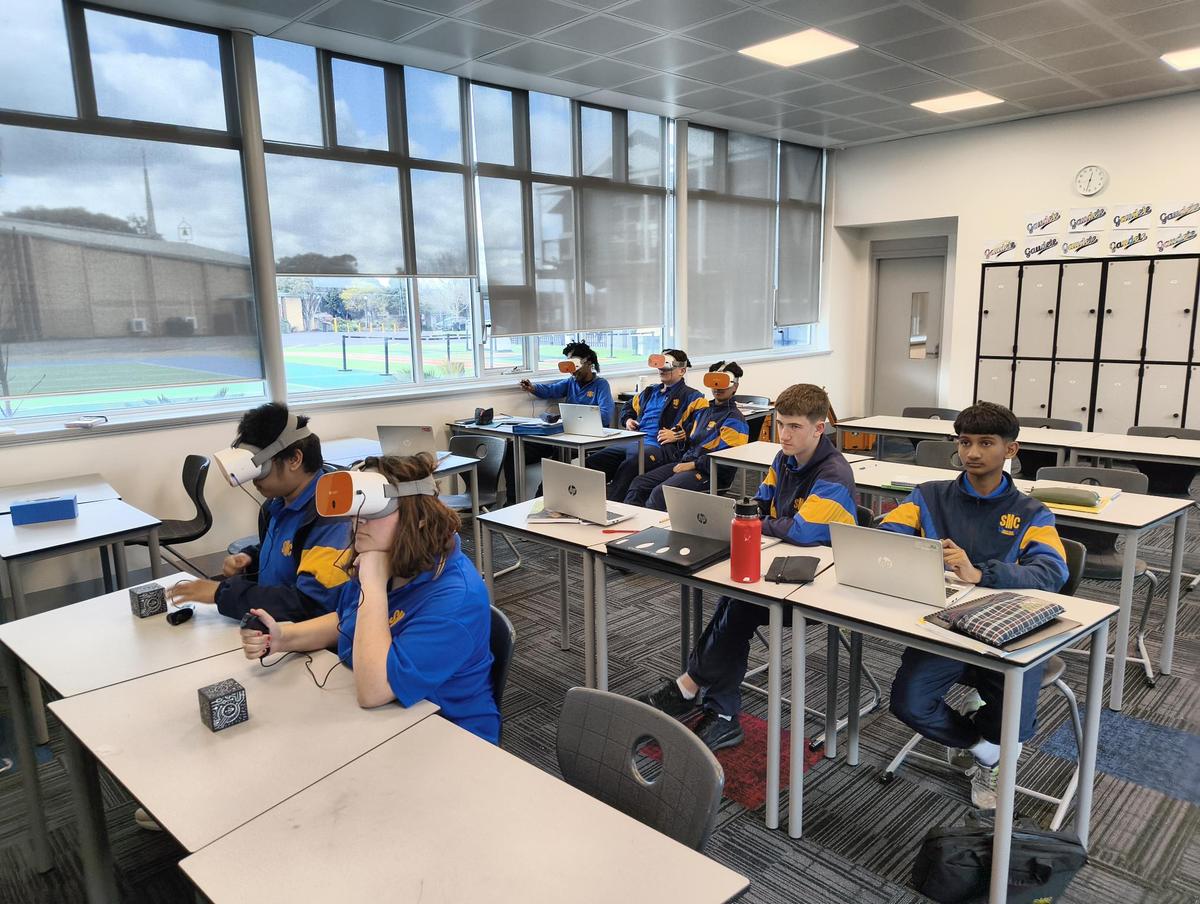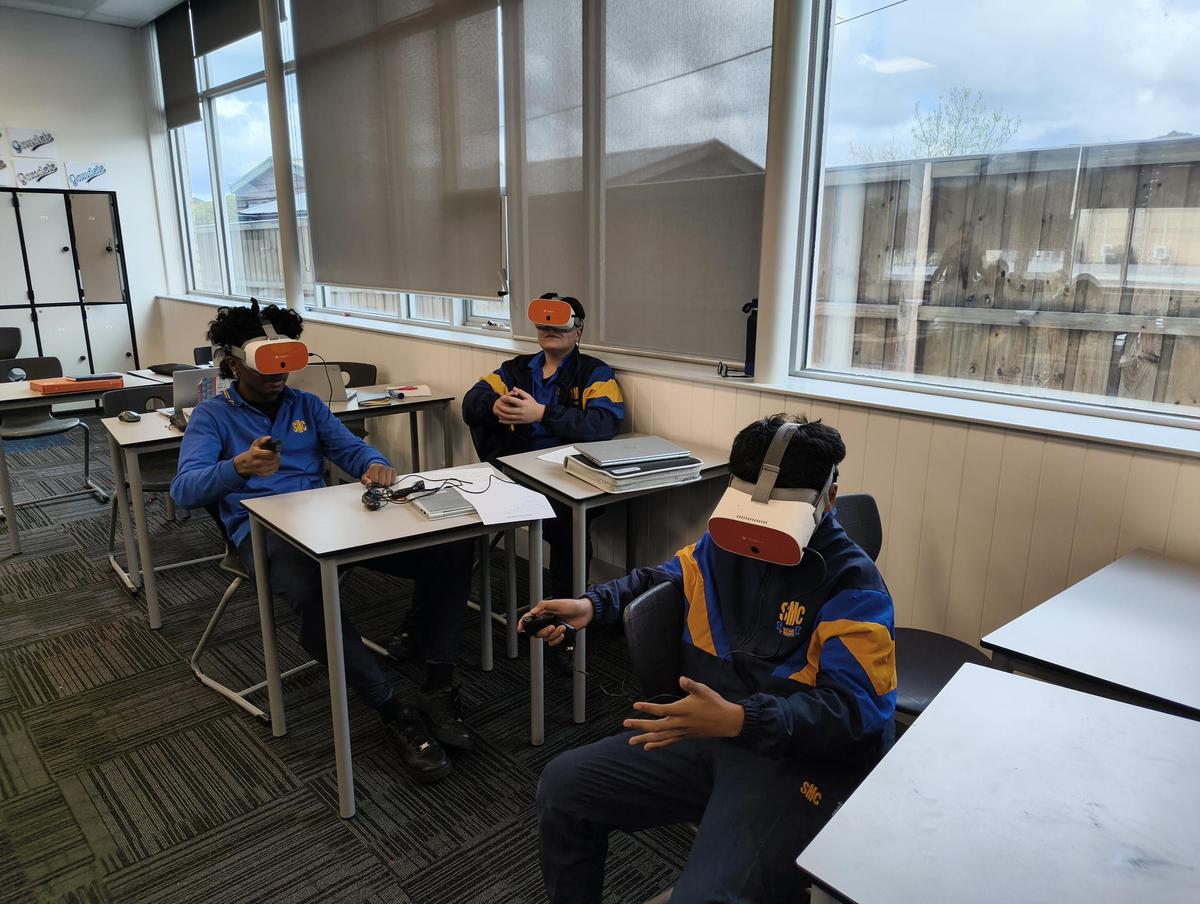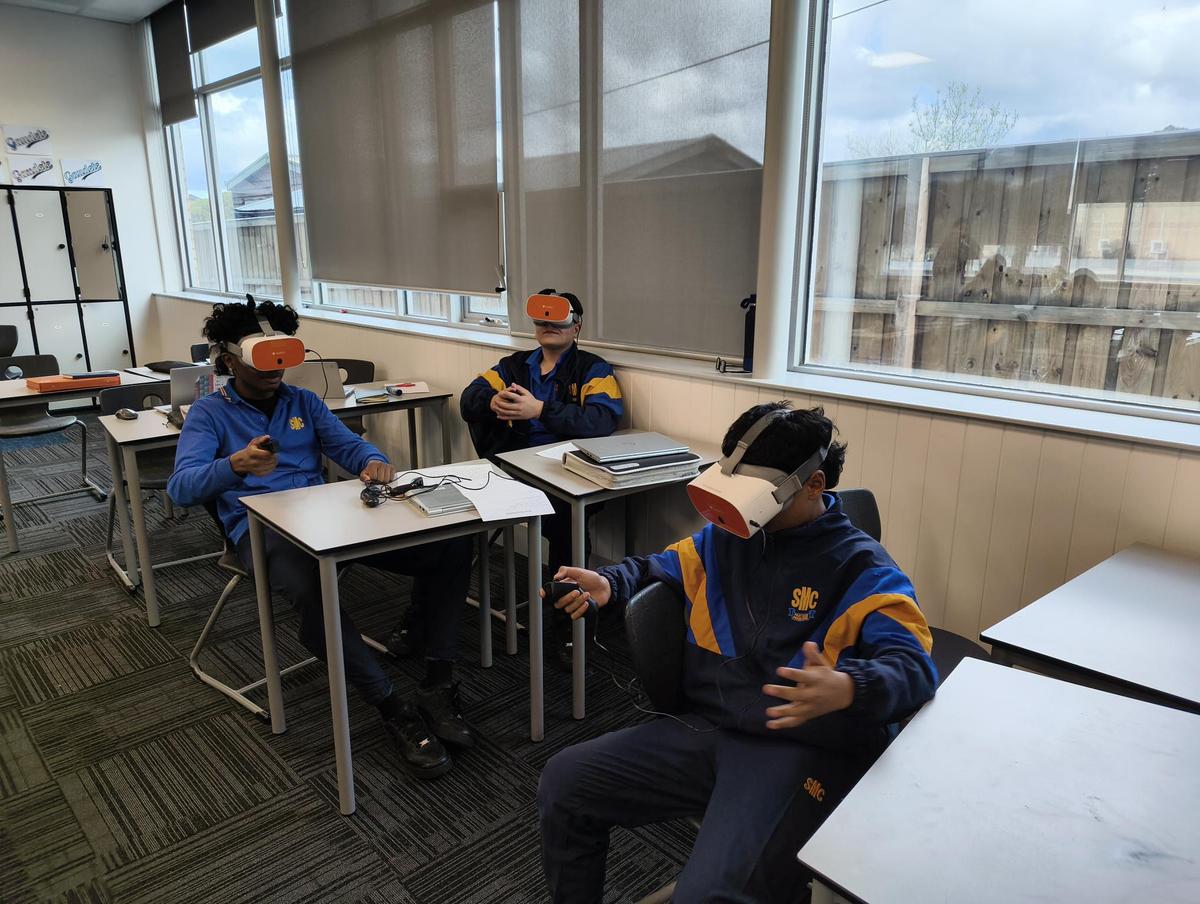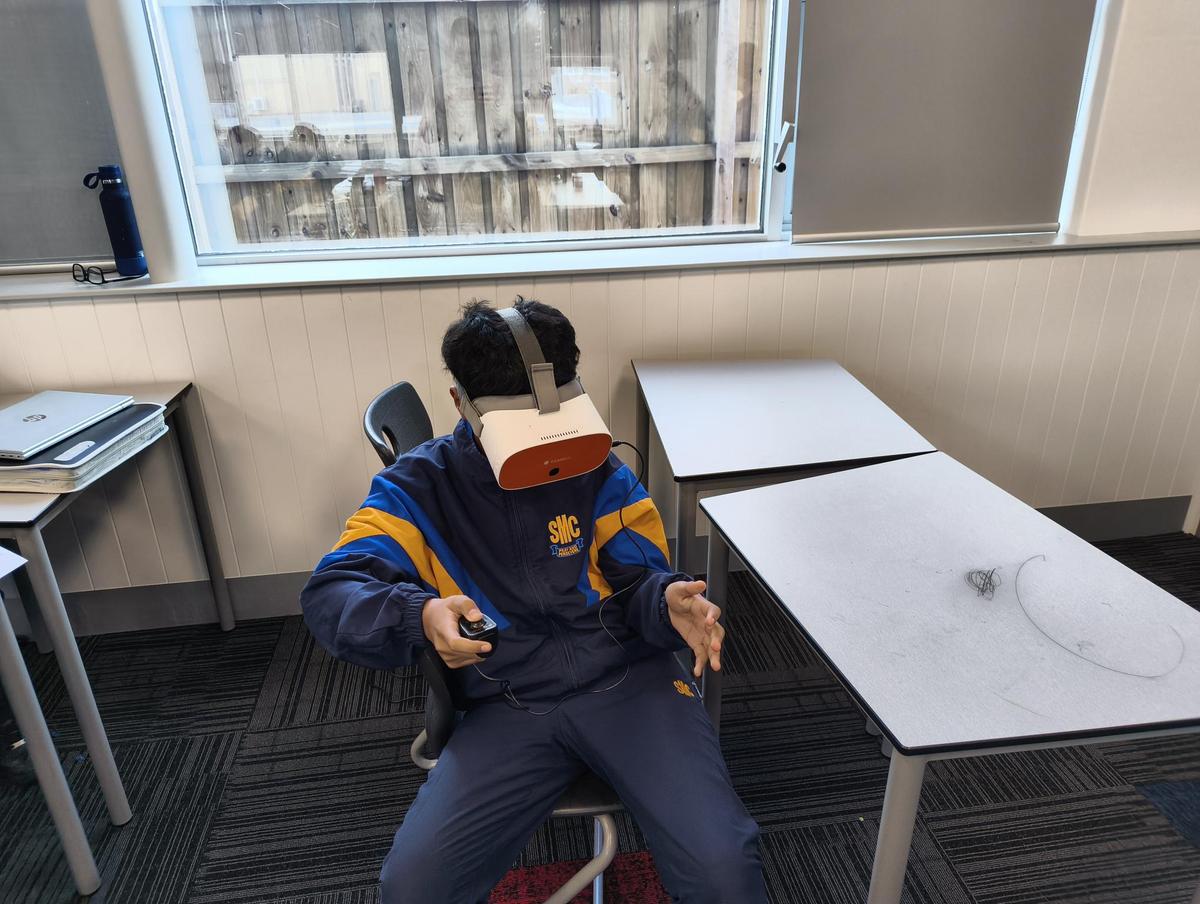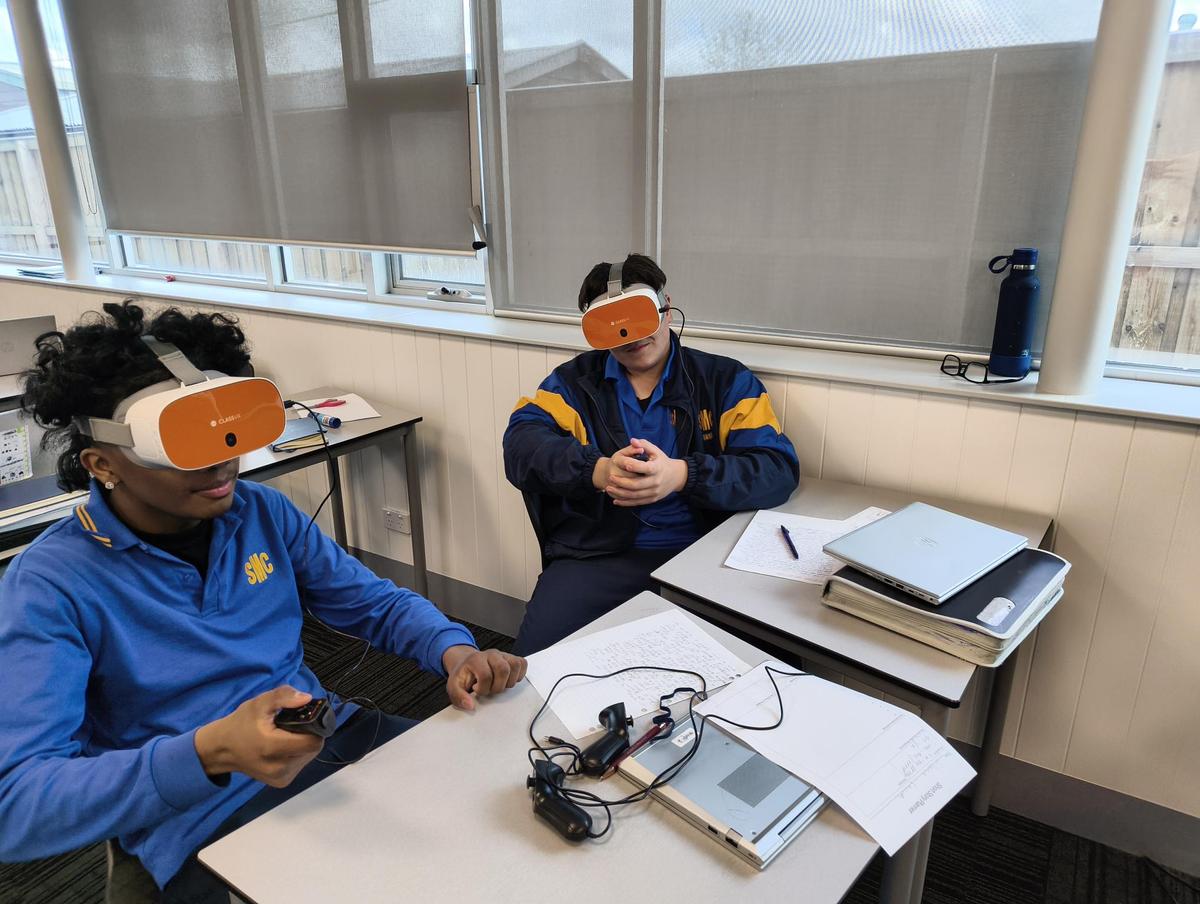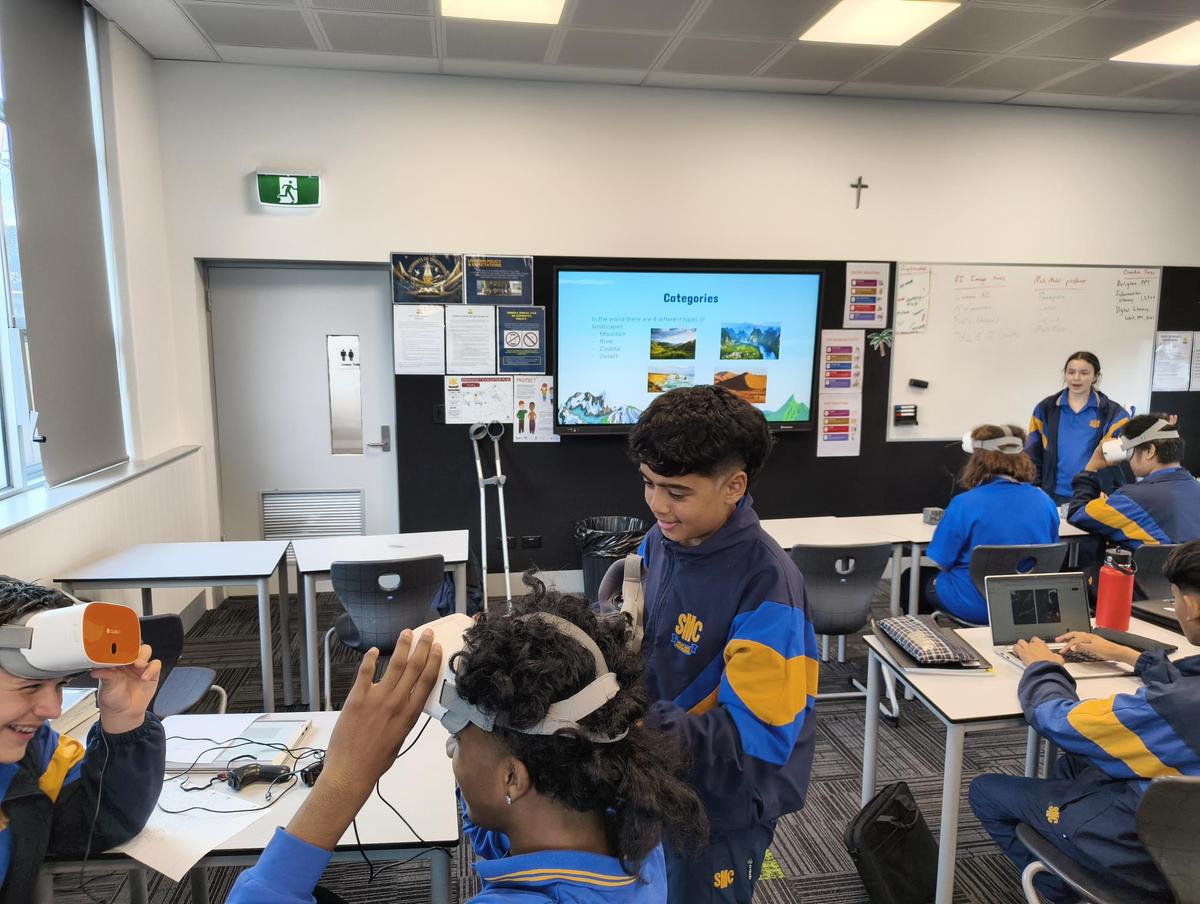STEM
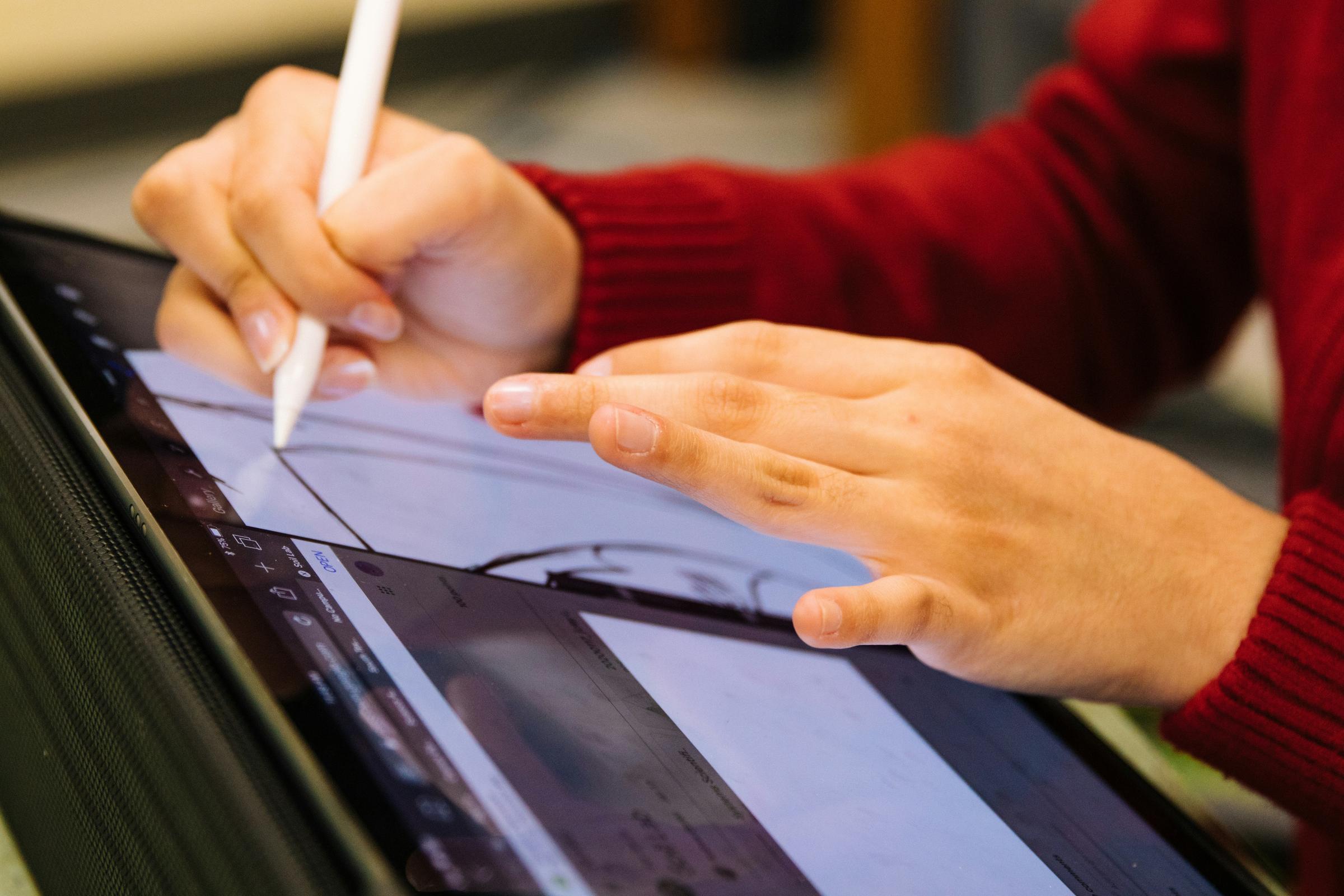
How to Bring Artefacts to Life: AR in Year 8 SGC Humanities Archaeology
In Year 8 Humanities, students at St Monica’s are exploring the ancient world and landscapes in a whole new way using Virtual Reality (VR) and through the lens of Augmented Reality (AR). This innovative technology is transforming how students interact with archaeological artefacts, making history more engaging and accessible.
Using AR merge cubes, students can examine 3D models of ancient tools, bones, and structures. These digital artefacts appear in the classroom as if they were physically present, allowing students to rotate, zoom in, and explore every detail. This hands-on experience helps students understand how archaeologists study objects to learn about past cultures, technologies, and daily life.
For example, when studying Ancient Egypt, students can view a virtual sarcophagus and explore its carvings and inscriptions. In a unit on Roman civilisation, they can investigate the design of aqueducts or the engineering behind Roman roads. These AR experiences encourage students to ask questions, make observations, and think critically just like real archaeologists.
Beyond the artefacts themselves, AR also helps students understand the context in which these items were used. By placing objects within reconstructed historical environments, students gain insight into how people lived, worked, and interacted in ancient times.
Integrating AR into Humanities not only enhances historical understanding but also builds STEM skills, as students learn about the technology behind these tools. It is a powerful way to connect the past with the future, and to inspire curiosity and deeper learning in the classroom.
We acknowledge the work of Mr Dylan Fulton who is leading innovative Curriculum teaching practices at the St Stephen/Gaudete Campus.
Mr S Bagh
Senior Teacher (Future Technologies, STEM Education)

